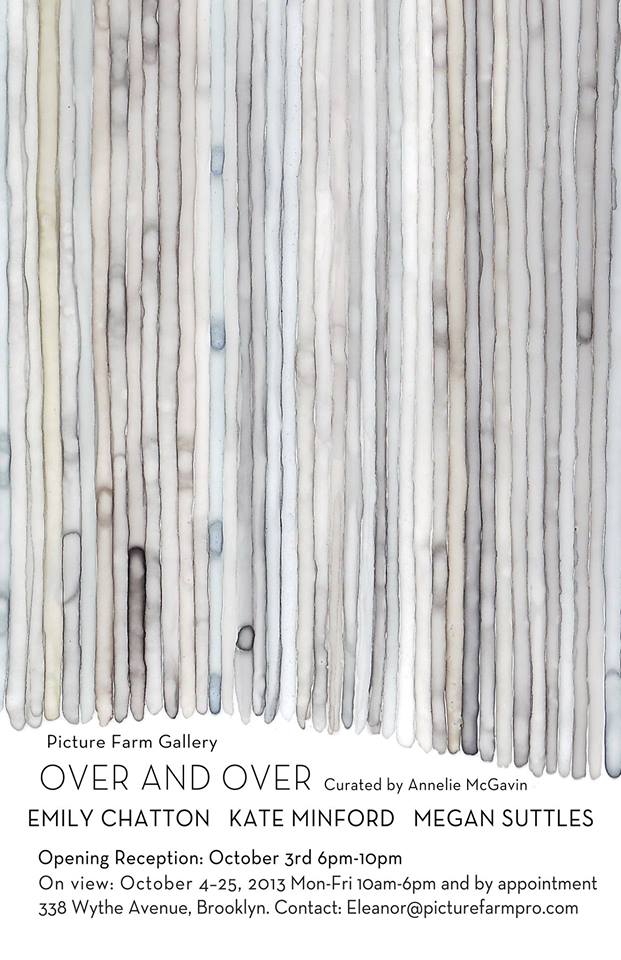Emily Chatton constructs environments influenced by nature and partial memories with a large mylar installation and 14 small paintings in India ink. Chatton’s interest in the materials and architecture of the industrial past inform the vignettes as quiet odes to the Natural History Museums in London and New York. The paintings are contained with uniformly broad, steel frames. These portal views to inked dioramas house liminal life forms and landscapes. The layers define or obscure the represented and create latticed paths, which intersect and switch rhythms like a tartan. The installation in the window is loosely hung in layers. Space between the veils of mylar allows for mobility and an aqueous quality.
Kate Minford considers her thread sculptures landscapes. The viewer is positioned in extreme close up to the picture plane of overlain thread. Loft between the fallen threads determines undulating, veined surfaces with shifting perspectival emphases. With this work, Minford extends her interest in strata. She describes the “archeological condition” as a means to examine the remains of an action and how acts of layering and uncovering alter form. The use of gold spray points to the emblematically precious or the appearance of preciousness. Traces of opulent jewels are outlined in white silhouettes on golden paper. They appear to have been laid with care to individuate each trinket in a template. In the installation titled Further into Forever, 2013;; the surface of the wood panel is marked with the vestigial form of a gold soaked rope. Like a curious remnant from a fairytale, gold chains extrude and spill from the panel’s surface.
Megan Suttles employs twenty pounds of splayed bobby pins in a large installation of columns that reach from floor to ceiling. Her use of the pin, a small and domestic object in a cabled grid, continues Suttles’ concern with anxiety and the incremental accumulation towards critical mass. Control and collapse are inherent in the explosive gesture of tape in Blow Up, 2013. Layers of resin encase the fragments of metallic duct tape suspended like ants in a stratum of amber. The gesture within a geometric form explores tension between restraint and disorder and the way anxiety can be concealed with an appearance of balance. These works provide form to anxiety and demonstrate its objecthood in the physical world.
OCTOBER EDITION : OVER AND OVER


